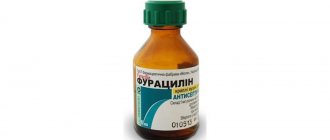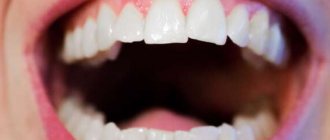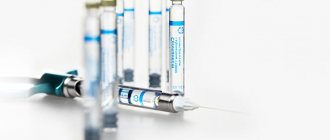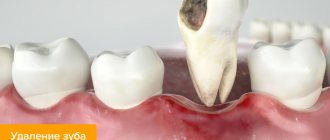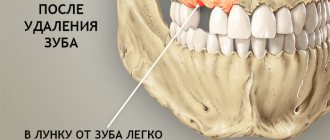Disinfection, which must be carried out after tooth extraction, is a mandatory condition for oral care. There are many antiseptics sold in pharmacies, but dentists often recommend using homemade, less aggressive remedies.
The use of soda solutions is a simple way to disinfect the wound formed at the site of an extracted tooth. Before manipulations, be sure to find out all the features and rules for using products with sodium bicarbonate as an active component, this will allow you to avoid unpleasant complications.
Features of rinsing the tooth after removal with soda
After tooth extraction, a deep wound remains. The first treatment is carried out by a dentist, disinfecting medications are used. Within a few hours, a dense blood clot forms on the wound, protecting the tissue from infection, dirt, and bacteria no worse than powerful medications.
Rinsing can wash away the natural barrier, so doctors do not recommend carrying out the procedure during the first 24 hours. Be sure to monitor the condition of the wound - if signs of inflammatory processes are noticed, begin manipulations using soda solutions earlier.
Expert opinion
Carefully!
Manipulations are recommended to be carried out carefully. Even if you use a composition in which the main component is baking soda, when rinsing, try not to disrupt the integrity of the blood clot. You should not vigorously roll the liquid in your mouth - this will inevitably lead to the displacement of the blood plug; it is better to just hold the solution in your mouth.
Be sure to use room temperature products. If the composition has cooled down, put it on the stove and heat it up. Perform wound disinfection procedures immediately after mixing the home remedy. Even short storage is enough for sodium bicarbonate to lose some of its medicinal properties.
Recommended for you:
How to treat brain cancer with soda solution at home
After the procedures, avoid eating solid, hot foods. Food particles will cause additional pain and dislodge the clot that protects the wound. Alcohol is no help here - alcohol will cause pain.
Indications for hygiene procedures with soda
Baking soda will help get rid of a number of oral problems.
The use of a special liquid for treating teeth is indicated in the following cases:
- for pain in teeth of various origins;
- to remove pathogenic microorganisms that enter the oral cavity along with food and are retained between the teeth;
- to eliminate plaque that lingers on tooth enamel and is caused by prolonged smoking, drinking coffee and strong tea;
- to prevent infections after tooth extraction;
- to prevent the development of inflammatory processes and darkening of tooth enamel, as well as the formation of tartar.
Indications for the use of soda solution are:
- oral candidiasis;
- flux;
- caries;
- stomatitis;
- inflammatory processes of the gums and tongue (gingivitis and glossitis);
- periodontitis.
Note! Despite the harmlessness of water with added liquid, it cannot be used as the main method of therapy: diseases of the teeth and oral cavity must be treated with the assistance of qualified specialists.
Sodium bicarbonate rinse
Baking soda is a substance often used to disinfect wounds. Dentists recommend performing manipulations only when removing a purulent tooth. Inflammatory processes occurring in the oral cavity are another reason to resort to an effective composition.
Soda recipe:
- Boil water (220 ml), cool to room temperature, hot liquid will reduce the effectiveness of NaHCO3.
- Combine warm liquid, sodium bicarbonate (15 g).
- Stir until all grains of powder disappear.
- Use immediately, reheat if necessary.
Rinse carefully - if you experience pain, simply hold the prepared liquid near the wound. Cotton wool soaked in soda will help stop the inflammatory processes - place a small swab on the site of the extracted tooth and leave for a quarter of an hour.
You should not exceed the recommended procedure time - NaHCO3 will begin to corrode the tissue, causing additional complications.
Properties and benefits of soda for teeth - the principle of action of mouth rinse
Baking soda will help relieve toothache.
Baking soda does not have a negative effect on tooth enamel. A rinsing composition based on it has the following beneficial properties:
- has an antiseptic effect, eliminating pathogenic microorganisms;
- whitens the surface of teeth;
- relieves pain;
- makes breath fresh;
- reduces the severity of the inflammatory process.
Important! A composition with a weak concentration of soda can be used even during the period of teething in infants. To relieve pain, this product is lubricated on the gums and tongue.
Water with soda dissolved in it has a pronounced antiseptic effect and also suppresses pain. This product is non-toxic and safe for teeth and mucous membranes of the oral cavity.
Soda-saline solution for gum inflammation
Expert opinion
Advice!
Infection in the wound, accompanied by inflammatory processes, is a reason to use a more aggressive agent. The combination of regular salt and NaHCO3 will stop the spread of infection, get rid of accumulations of pus, and relieve pain.
The first manipulations are unpleasant - the composition causes pain, so after using the product, rinse your mouth with plain warm water.
Preparation of the product, recipe:
- Mix salt (15 g), sodium bicarbonate (15 g).
- Pour warm water (200 ml) into the bulk mixture.
- Stir until the salt crystals completely disappear (they can cause irritation and damage the tissues of the oral cavity).
Rinse without vigorously rolling the liquid. Leave the solution on the affected area for a few seconds.
Recommended for you:
Soda enema to remove parasites from the body, how to properly make a soda solution and give an enema
Repeat the procedures 3-6 times a day. If after manipulation the blood clot begins to wash out and break down, reduce the number of procedures. Additionally, using brilliant green or iodine for cauterization is prohibited - this will lead to the formation of a burn to delicate sensitive tissues.
How to rinse your mouth after tooth extraction: list of products
- Chlorhexidine is the most common pharmaceutical drug. It is a colorless, transparent liquid that has a slight odor and bitter taste. For dental purposes it is used in a concentration of 0.05%. It has an antiseptic effect and is active against a wide range of microorganisms, with the exception of fungi and viruses. Contraindicated for use by pregnant women and children due to possible ingestion. To rinse, you need to put a small amount of solution in your mouth; dilution in water is not required;
- Miramistin - unlike its predecessor, Miramistin has a wider spectrum of antibacterial action, and also affects viruses and fungi of the genus Candida. The drug improves local immunity of the oral cavity and promotes better healing. Actively affects pus-forming bacteria. Available in plastic bottles and in the form of a spray, so it can be used for oral baths and irrigations. Doesn't get into the blood. Can be prescribed to pregnant and lactating women;
- a solution of soda and salt - the combination of these two substances has an antiseptic effect. To enhance the effect, it is recommended to add a couple of drops of iodine tincture. Dissolve 7-10 grams of soda and salt in 250 ml of boiled water; it is important that the water is not cold. Rinse 2-3 times a day. However, you should be very careful. Vigorous rinsing with such a solution can not only remove the clot, but also irritate the wound, so it is better to give preference to other, less aggressive methods;
- Furacilin - perfectly exhibits its properties as an antiseptic in the treatment of purulent-inflammatory processes. To prepare the solution, take 10 tablets per 1 liter of water. To make the tablets dissolve better, you can crush them first and use hot water. Should be used in the form of oral baths for 1-2 minutes 3-4 times a day;
- herbs - decoctions based on herbs, such as chamomile, calendula or sage, have proven themselves as gentle remedies that are effective in various types of inflammatory processes. When using a herbal decoction as oral baths, the healing rate of the extracted tooth socket increases;
- potassium permanganate is an antiseptic familiar from childhood, with which you should be very careful, because a large concentration or undissolved crystals of the substance cause a burn to the mucous membrane and even an allergic reaction. For this reason, this substance is not available for free trade;
- rinses - this oral care product is in some cases also applicable for rinsing after tooth extraction surgery. This applies to balms used for gum disease. Extracts of eucalyptus, pine needles, calendula or oak bark have a good wound healing effect. Can be used 2-3 times a day.
If something white appears in the hole after removal, then do not panic.
Iodine, soda against bleeding
Expert opinion
Attention!
The use of iodine in its pure form after tooth extraction is strictly prohibited, but the combination of baking soda and a pharmaceutical preparation allows you to quickly get rid of bleeding. Painful sensations also effectively disappear after 2-4 procedures performed at home.
Preparation of solution, application:
- Boil water (210 ml), wait until it cools.
- Add iodine (2-5 drops), stir.
- Add sodium bicarbonate (20 g).
It is recommended that manipulations with the solution be carried out every 2-3 hours. Bleeding will decrease in intensity after the first rinse, but there is no need to stop the procedures until the problem completely disappears.
FAQ
- Do not rinse your mouth on the first day after wisdom tooth removal!
Is it acceptable to rinse your mouth with baking soda after wisdom tooth removal? After wisdom tooth removal, severe pain may persist for some time. But, even despite this, within 24 hours after the manipulation, the oral cavity cannot be rinsed with any solution, since there is a high risk of washing out the protective blood clot from the socket at the site of the extracted tooth. After the specified period, you can rinse.
- Is it possible to rinse an open tooth? Open tooth is a condition that involves opening the tooth to remove the nerve. In this case, rinses are prescribed to provide an antiseptic effect. It is allowed to use a solution of soda.
- What is better for procedures – saline or soda solution? Both of these solutions are effective, but each of them is suitable for a specific case. Baking soda has a greater antiseptic effect, while salt has a healing effect.
- Why is antiseptic treatment of the oral cavity necessary after tooth extraction? After tooth extraction, the treated area remains vulnerable to various infections until healing. To prevent the development of the inflammatory process, you should rinse your mouth with antiseptic solutions.
- How to make soda baths for teeth? Dental baths are a procedure that is almost no different from rinsing. A distinctive feature is the need to keep the solution in the mouth, between the gum and cheek, for up to 40 seconds. In one session, you need to repeat the manipulation up to 4 times a day.
Herbal decoction for rinsing
A decoction of plants will help relieve the painful sensations that arise after a visit to the dentist. To increase efficiency, it is recommended to add NaHCO3. Use a composition based on sodium bicarbonate, despite severe pain, one day after tooth extraction.
Preparation, use:
- Grind dry sage (20 g), rub with your hands, turning it into a fine paste.
- Brew the vegetable pulp with boiling water (240 ml), leave, cover with a lid to obtain a rich decoction.
- Baking soda is added after filtering - 15-18 grams are needed. cooking powder.
It is recommended to prepare a large portion of the broth, adding soda before rinsing. Store the herbal remedy in the refrigerator, heat it up before use, and use the microwave.
If the body reacts negatively to sage, replace the plant with chamomile inflorescences, which have disinfectant and analgesic properties. At the same time as disinfecting the wound, chamomile infusion will relieve pain.
Types of solutions
Other components can be added to a basic solution of baking soda and water to enhance effectiveness.
List of different recipes containing baking soda:
| Compound | Cooking method |
| Soda-salt | You need to take 200 ml of warm water and 10 g of baking soda and kitchen salt. Combine everything and mix thoroughly. Rinse your teeth and mouth three times a day. The solution blocks the proliferation of pathogenic bacteria, heals microtraumas and ulcers, and prevents the deposition of tartar. |
| Soda with iodine | For 200 ml of warm water, take a teaspoon of soda and 6-8 drops of iodine (5%). Connect the components. You should rinse your mouth with this solution every three hours. The maximum allowable period of treatment in this way is 5 days. A solution with iodine has an antimicrobial and healing effect, as well as an analgesic. |
| With added sage | Rinsing your mouth and teeth with a soda solution can be combined with a sage-based decoction. To prepare it, take a tablespoon of dry raw materials, brew 200 ml of boiling water, let the broth brew and cool, then strain. Rinse every 30 minutes to an hour. |
